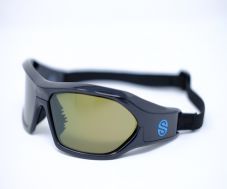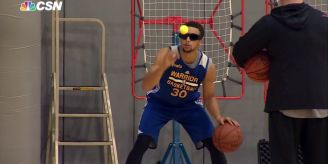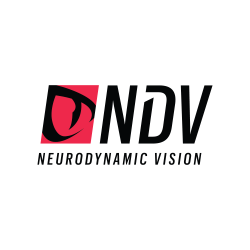Switzerland's match-winning Euro 2020 goalkeeper was seen training in special agility-boosting sunglasses before his decisive penalty save
Barnaby Lane Jun 29, 2021, 3:31 AM
Goalkeeper Yann Sommer was his country's hero on Monday night as Switzerland knocked reigning world champion France out of Euro 2020. After a thrilling 3-3 draw which resulted in a penalty shoot-out, the 32-year-old saved Kylian Mbappe's final spot kick to send his team into the quarterfinals for the first time ever. The secret to Sommer's history-making moment? Battery-powered, shutter effect sunglasses. At least that's what the Borussia Monchengladbach star and his Swiss teammates have been using in training to improve their reaction times and anticipation.
How to add 'Overload Training' to the visual system
Greg Appelbaum, Duke University Medical Center
Resistance training is now a commonplace technique for improving athletic performance. Classically, resistance training involves moving the limbs against a physical impediment, such as elastic bands, dumbbells or one’s own body weight.
Resistance training, however, can involve any type of technique in which the training situation is made purposefully harder than the competitive conditions as a way of overloading the system to maximize the training gains. As such, techniques like running at altitude or swimming with a drag suit also constitute forms of resistance training. In recent years, there has been a new approach added to this resistance training arsenal, called stroboscopic visual training (SVT).
Stroboscopic Visual Training (SVT)
SVT is a form of training in which individuals practice under conditions where their visual input is purposefully interrupted with the intention of enhancing subsequent performance when they return to normal visual conditions. Most typically this is done using specialized eyewear with liquid crystal lenses that alternate between transparent and opaque states, thereby creating a ‘strobe’ effect. Through buttons on the temple, athletes can control the rate of occlusion.
At lower levels, the opaque state lasts only about 100 milliseconds, meaning that the wearer sees many visual updates per second with little visual loss, making the interruption rather minimal. However, as the person ‘levels up’, the duration of the opaque state becomes longer, up to about 900 milliseconds, meaning that the interruption becomes more and more severe with greater loss of visual information.
At these higher levels, activities such as returning a serve, catching a fly ball, or taking a shot on goal become quite difficult and require extreme attention and concentration. Because of the ease of use, relatively low cost, and ability to integrate into many different sporting contexts, SVT has become an increasingly popular athletic training tool. In accord, there has also been an increase in the number of research studies attempting to test the potential benefits, optimal parameters, and the mechanisms of action that might underlie SVT.
In an attempt to synthesize this growing research, Wilkins and Appelbaum recently authored an article entitled, “An early review of stroboscopic visual training: insights, challenges and accomplishments to guide future studies”. This article, published in the International Review of Sport and Exercise Psychology, in February of 2019 offers an early review of the research to date, with a focus on the methodological approaches, such as the training and testing protocols, the participant samples and control groups tested, and practical considerations that enable SVT in applied settings.
To accomplish this goal, the authors reviewed 7 published studies that empirically tested SVT in the context of sporting activities but done in the absence of any other interventions. In addition, the authors also discuss other articles that have addressed SVT as an approach for lower extremity rehabilitation (e.g. following ACL tears) and other non-sporting enhancements (e.g. surgical training).
SVT Benefits
Through this review the authors surmise that while still at an early stage, the existing research points to SVT enhancing some aspects of foveal visual sensitivity and visual motor- control, with notable benefits for some athletic tasks. Moreover, the authors describe two potential mechanisms-of-action that might lead to such SVT-related gains. Namely, athletes training under stroboscopic visual conditions are either forced to (1) utilize the limited visual samples they receive more efficiently, and/or (2) utilize other facilities, such as kinaesthetic awareness and auditory cues, more effectively. Despite these promising preliminary conclusions, the authors also point to the need for greater consistency in research design, including providing specific recommendations to assure that future studies possess sufficient rigor and can be objectively interpreted to provide valuable new information that moves this new field forward.
control, with notable benefits for some athletic tasks. Moreover, the authors describe two potential mechanisms-of-action that might lead to such SVT-related gains. Namely, athletes training under stroboscopic visual conditions are either forced to (1) utilize the limited visual samples they receive more efficiently, and/or (2) utilize other facilities, such as kinaesthetic awareness and auditory cues, more effectively. Despite these promising preliminary conclusions, the authors also point to the need for greater consistency in research design, including providing specific recommendations to assure that future studies possess sufficient rigor and can be objectively interpreted to provide valuable new information that moves this new field forward.
Bio Greg Appelbaum: Associate Professor in the Department of Psychiatry and Behavioral Sciences at Duke University he heads the Human Performance Optimization Lab (OptiLab; www.dukeoptilab.org). Dr Appelbaum also directs the Brain Stimulation Center and is research director of the new Duke Sports Vision Center.
Link to Purchase SENAPTEC STROBES




Comments